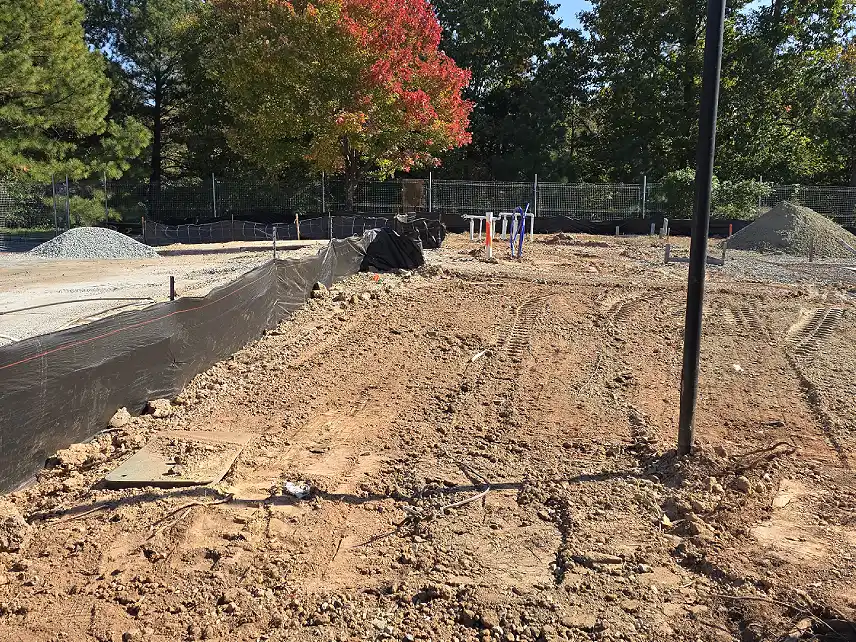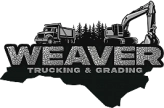
Grading and Clearing: The Foundation of Every Successful Construction Project
Before any building, road, or landscape project can truly begin, the land must be properly prepared. Two critical early steps in this process are clearing and grading. These tasks set the foundation for everything that follows, ensuring stability, safety, and efficiency. Let’s dive into what grading and clearing involve — and the heavy-duty equipment that makes it possible.
What is Land Clearing?
Land clearing involves removing trees, shrubs, rocks, debris, and sometimes old structures to create a blank canvas for construction. It’s essential to eliminate anything that could interfere with building foundations, roads, pipelines, or landscaping.
Common Steps in Clearing:
- Tree and brush removal: Cutting and removing vegetation.
- Stump grinding or removal: Removing root systems that could cause instability.
- Rock and debris clearing: Hauling away any obstructions.
- Demolition: Tearing down any unwanted structures.
1 Design Your Project
We’re proud to offer grading, clearing and drainage solutions for your home or business.
2 Development
We are a full-service landscape contractor providing grading and clearing of roof drains, driveways, erosion control, rock and gravel.
3 Completion
You’re hiring a team that’s in it for the long haul. Working closely with you to make sure that your project is done right and on time.
What is Land Grading?
Once the land is cleared, grading shapes the surface to match the desired specifications. Proper grading ensures correct drainage, erosion control, and the stability of structures.
Common Grading Tasks:
- Leveling the ground: Creating a flat base for building.
- Sloping for drainage: Making sure water flows away from structures.
- Compacting soil: Strengthening the ground to support heavy loads.
Equipment Used for Clearing and Grading
Land preparation would be nearly impossible without the right tools. Here’s a breakdown of the heavy equipment typically used:
- Bulldozers
- Primary use: Clearing large trees, debris, and topsoil.
- Why it’s essential: Bulldozers are powerful and versatile, able to push large amounts of material quickly.
- Excavators
- Primary use: Digging, stump removal, and handling large objects like rocks.
- Why it’s essential: Excavators come with various attachments (like grapples and rakes) that make them extremely adaptable for different clearing tasks.
- Skid Steer Loaders
- Primary use: Smaller scale clearing and grading.
- Why it’s essential: Their compact size makes them perfect for tight spaces, and they can be equipped with different tools like brush cutters and grading buckets.
- Motor Graders
- Primary use: Fine grading and creating precise slopes.
- Why it’s essential: Motor graders allow for a high level of precision, making them ideal for creating even surfaces for roads or foundations.
- Compact Track Loaders
- Primary use: Both clearing and grading on softer or uneven ground.
- Why it’s essential: Their tracks distribute weight evenly, preventing sinking in muddy or loose soil conditions.
- Forestry Mulchers
- Primary use: Grinding trees, brush, and vegetation into mulch directly on-site.
- Why it’s essential: Mulching can be a more eco-friendly way to clear land, eliminating the need for burning or hauling away debris.
- Dump Trucks
- Primary use: Hauling away debris and bringing in fill material.
- Why it’s essential: Without trucks, moving large quantities of material would be time-consuming and costly.
Why Proper Clearing and Grading Matters
Skipping or rushing the clearing and grading process can lead to serious problems later — like flooding, foundation cracking, and project delays. Investing time and resources into doing the job right from the start ensures that construction projects are safer, more durable, and more cost-effective.
Final Thoughts:
Clearing and grading may happen early in a construction project, but their importance can’t be overstated. With the right equipment and skilled operators, land is transformed from wild, uneven terrain into a solid base ready to support all types of development.

